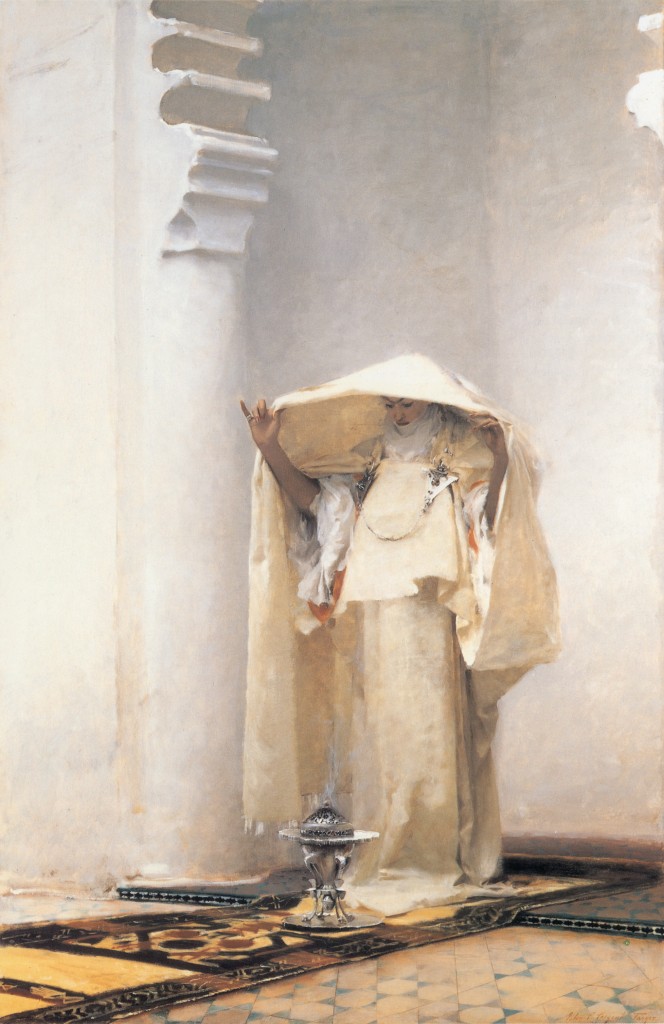Fumée d’Ambre Gris
In the winter of 1879 John Singer Sargent travelled to North Africa in the pursuit of the exotic. Orientalism and the lure of other cultures (particularly those which were non-Christian) sparked curiosity in a number of painters in the late 19th century. Although Sargent’s travels had influenced his works he is not usually associated with this genre. As a high society portraitist the artist might have welcomed a total change in subject. Rather than a sitter of fame or fortune his model is a nameless woman, detached from the world and totally involved in what she is doing. Her isolation is further emphasised by the fact that she inhabits such a small portion of the canvas and practically blends in with the building around her. Standing in a kind of niche the only architectural clue as to where she is located are the column capitals to either side of her, bringing to mind a side-chapel of a church. Solid and silent she is like a caryatid, her strange clothing itself like a column. The cool alabaster and milky cream colours are evocative of warm light and dry air, atmospheric conditions notably foreign to ours. An elaborately detailed floor and rug bring a spectrum of colour to the image; ochre, russet and black. There is a flash of orange at her sleeve.
The woman holds a sheet above her head to catch the fumes from the censer at her feet. Ambre Gris (or ambergris), a whale product, was burnt in religious ceremonies to protect against evil or illness. What is to the woman familiar and ritual is to us strange and intriguing. The detailed silverwork is picked out in the woman elaborate cloak clasp, the weight and simple geometry of which strikes me as warrior-like. Contrasting with this are her delicately poised ringed fingers, her nails painted red. The very little we see of her face is beautiful. Strong dark brows, kohl-outlined eyes, a long aquiline nose and plump lips. She does not acknowledge us, in fact the disconnection between her and us is decidedly pronounced. It is a glimpse of the exotic through a Westerner’s eye.
Other than the figurative elements of this painting there is something else that is characteristic of Sargent; the symphony of colour. Sargent himself wrote from Africa of “a little picture” he had been working on, “the only interest in the thing was the colour”. I love how the light allows for such little shadow, in fact it is only the wall behind the woman which has any shade, defining her outline and accentuating the warm tones of her clothes against the stark white behind her. Sargent demonstrates his bravura in such a low-key way. His dexterity and understanding of tone is what makes him a painter of genius. The scene is essentially a snapshot, it doesn’t feel staged and there is no real narrative or emotion in its motive. There is so little visual information but it is intoxicating nonetheless, I could stare at it for hours. Who the woman is and what she is doing is not important. Sargent prepared for this work while in Tangiers and completed it in his Parisian studio. It was exhibited in the Salon in 1800, and one critic said that it is “a perfect piece of painting.” I completely agree.

